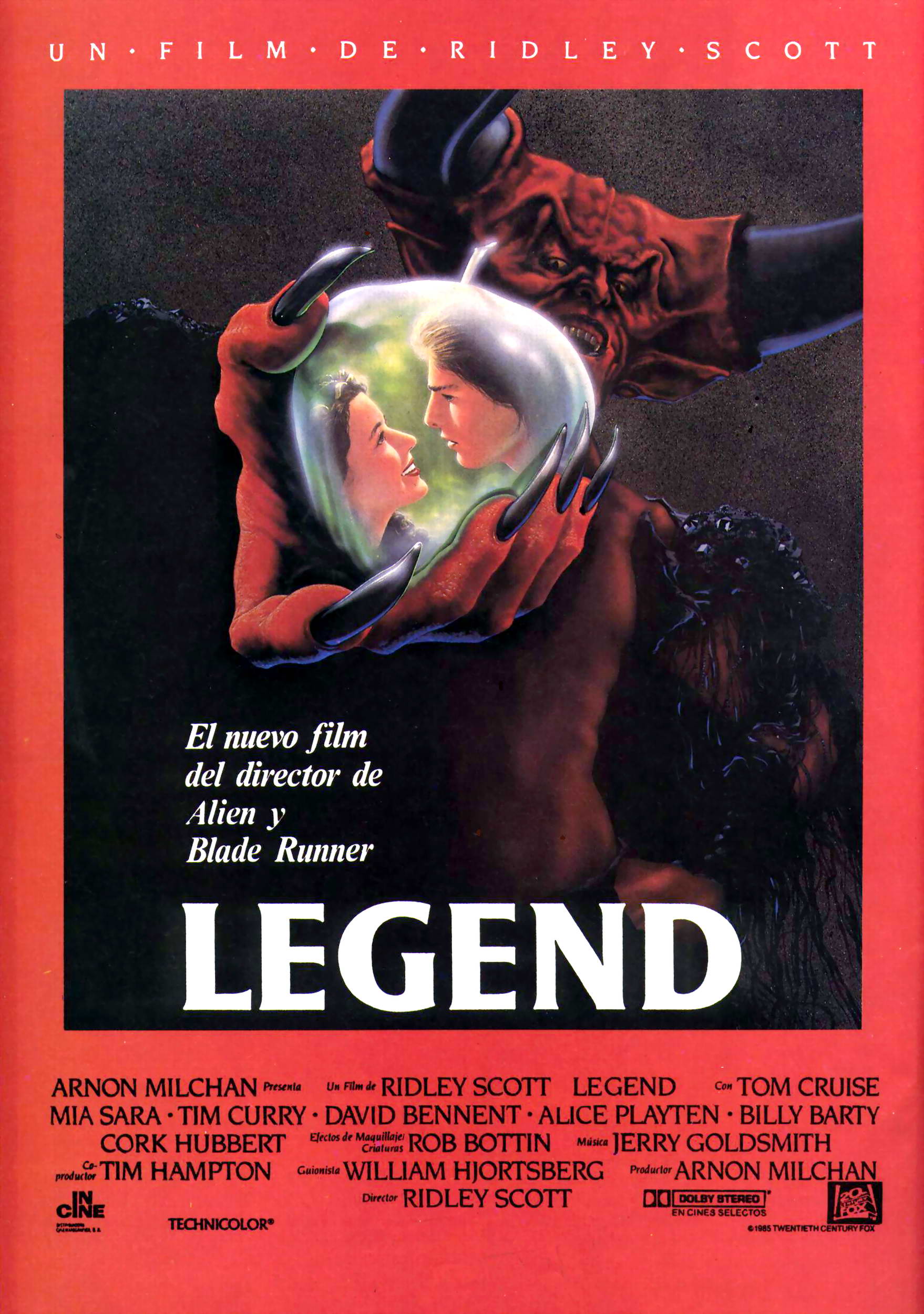Fig. 1. Legend poster
Legend is a highly theatrical film. While somewhat lacking in the plot department, the film provides sumptuous visuals. “The film is impossibly beautiful. The entire movie was shot inside a studio, with all of the exterior forest scenes recreated indoors for maximum visual control.” (Bacchus, 2011). With this much control over the visuals, shots are composed extremely strongly; the rule of thirds is everywhere, and any individual still could be a carefully composed photograph.
Fig. 2. Darkness mid-shot.
Perhaps the most distinctive visual element of Legend is that of Darkness, the main villain; Tim Curry is smothered in makeup to make him into a red, angry demonic figure with impossibly huge horns. In fact, Curry’s makeup is a reasonable metaphor for the entire film; conceptually not all that different from existing ideas and clichés, but made larger-than-life. Assheton Gorton, the film’s production designer, “created a series of fancy, plastic sets that keep the eye busier than the mind or the heart. When he runs out of dandelion fluff, he fills the air with cherry blossom petals and, later, with snow so fine and glisteny it looks to be sugar, plus 1,500 icicles made of resin and hot wax.” (Canby, 1986).
The film uses simple folkloric concepts, but “seems to be set less in the land of the Brothers Grimm than in some kind of cinematic limbo, where characters have neither purity to be simple archetypes nor the depth to be truly believable.” (Biodrowski, 2009). The film’s occasional attempts to look at the darker side of fairy tales are stillborn and, due to the gorgeous, idyllic, perfectly controlled nature of the sets, somewhat out of place. The precision with which everything is designed lends an air of artificiality to the film, which removes the possibility of the wildness and uncontrollability that a darker film would thrive on.
Fig. 3. Lily & Jack.
Legend has overtones of a virgin-whore complex; that is, the idea that a woman is only ‘good’ when she is pure and chaste, and that the slightest element of sexuality makes a woman a whore. Darkness, the villain of the piece, attempts to seduce Lily, placing her in a dark, revealing costume in contrast to her virginal white dress. Furthermore, Oona’s active rather than passive desire for Jack makes her catty and unhelpful, further suggesting that female sexuality is dangerous.
Illustration List
Scott, R. (1985) Fig. 1. Legend poster. (Accessed on 14/12/11)
Scott, R. (1985) Fig. 2. Darkness mid-shot. https://blogger.googleusercontent.com/img/b/R29vZ2xl/AVvXsEjUPpFKxm9mHOOZgV0BNeHcp-8v9rZ21vwRvwSwMK-a-aP9PU2D6Gf-ij1zjCgxY6aUOPQBpA662ADwcP3IXlEkYuYzdbckHAyZMoUHu85EiBkHOougnRJvz1n0bM6CXMW1WgT4WTUDrtg/s1600/Legend_13.jpg (Accessed on 14/12/11)
Scott, R. (1985) Fig. 3. Lily & Jack. http://www.multi-story.org/podcasts/films/legend_l.jpg (Accessed on 14/12/11)
Bibliography
Bacchus, A. (2011). Daily Film Dose. http://www.dailyfilmdose.com/2011/07/legend.html (Accessed on 14/12/11)
Biodrowski, S. (2009). Cinefantastique. http://cinefantastiqueonline.com/2009/05/legend-1985-retrospective-film-dvd-review/ (Accessed on 14/12/11)
Canby, V. (1986). The New York Times. http://movies.nytimes.com/movie/review?res=9A0DE2DC1E38F93BA25757C0A960948260 (Accessed on 14/12/11)




"Legend has overtones of a virgin-whore complex; that is, the idea that a woman is only ‘good’ when she is pure and chaste, and that the slightest element of sexuality makes a woman a whore. Darkness, the villain of the piece, attempts to seduce Lily, placing her in a dark, revealing costume in contrast to her virginal white dress. Furthermore, Oona’s active rather than passive desire for Jack makes her catty and unhelpful, further suggesting that female sexuality is dangerous."
ReplyDelete:D !!!